
views

Go to the United States Parachute Association's website to locate the nearest affiliated drop zone. Alternatives for other countries: Canada : The Canadian Sport Parachuting Association UK : The British Parachute Association Australia : The Australian Parachute Federation

Call the drop zone to ask about their hours and schedule a skydive.

Get all of your questions answered before you pay for the jump. Don't be afraid to ask whatever is on your mind because they've probably already heard your question before from someone else.

Choose the method of your first jump. The vast majority of people choose to make a tandem jump. This involves jumping out of the plane while attached via a harness to an instructor who wears a parachute big enough for both of you. It requires very little training and you can just "sit back and enjoy the ride" while the instructor handles all the technical parts of the skydive. Another type of jump called an AFF (Accelerated Free Fall) Level One jump is offered at most drop zones. The training for this skydive involves a ground school course taking approximately 5-6 hours followed by a jump with your own parachute. On this type of jump, you will have two experienced instructors holding onto you during your exit from the plane and subsequent freefall in order to assist you with proper body positioning as well as initiating the canopy opening. You will also have the assistance of an instructor on the ground who is in communication with you via radio to assist with your landing pattern and proper "flaring" for landing. One additional option you may encounter is a "static line" jump. This jump includes the same training as an AFF Level 1 jump however upon exiting the plane, your parachute is automatically deployed by a "line" attached to the aircraft. Static line jumps have generally decreased in popularity in recent years, and most first-timers end up making either a tandem or AFF Level 1 jump. The remainder of this article describes steps related to making a tandem jump which is the most common first time jump.
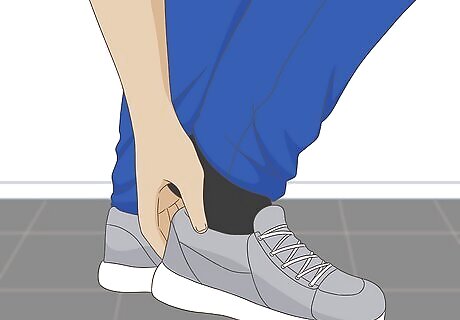
On the day of the jump, dress for the weather on the ground and wear sneakers. Bring an extra layer if you want but part of the fun is feeling the rush of air and although it is colder at high altitudes, you probably won't notice the difference because of all the adrenaline.

Arrive before your appointment time but be prepared to wait for instructors to become available, the weather to break, etc. Even though you'll only be free falling for a minute, plan on being there for the entire day just in case.

Pay attention. Before your jump, you will get a briefing and meet your instructor; this will help you enjoy your skydive much more. They will fit you into a harness that will connect to the instructor and the parachute.
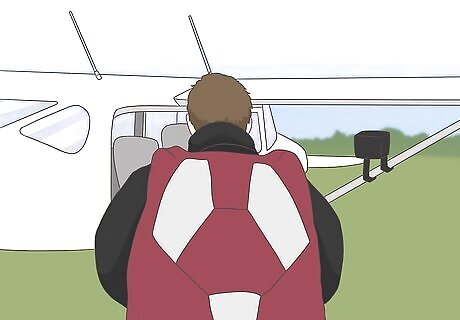
Board the plane and just soak it all in. Before you reach the jumping altitude (between 9,500 feet and 17,500 feet) the instructor will clip your harness onto theirs. At this point you are literally joined at the hip.
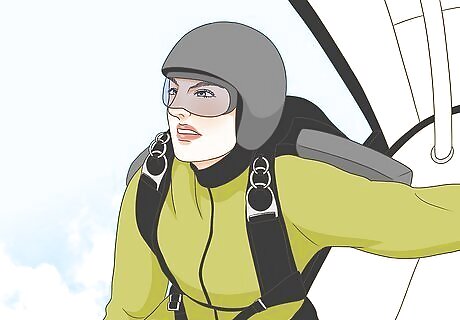
Exit the plane. Listen to your instructor on how they want you to do this because every plane and every instructor/student combination is different.
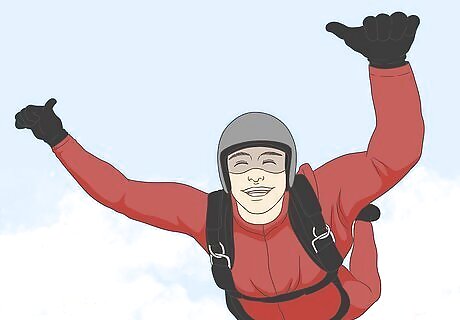
Enjoy it! Enjoy the feeling of falling at 120 miles (190 km) an hour and feeling free as a bird. The sensation is like no other, it feels like you are floating but the rush of air tells you that you are falling.
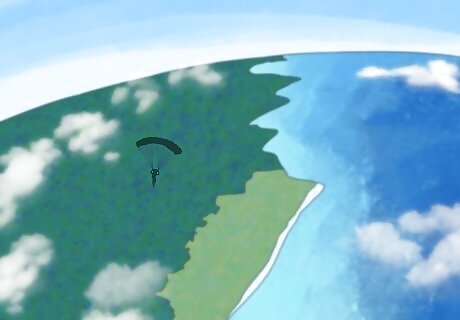
Enjoy the view. Once the instructor deploys the parachute you have a 360 degree view of the beautiful earth from about 5,000 feet (1,524.0 m). Your instructor may loosen your harness at this point for your comfort. Don't worry, they won't drop you!
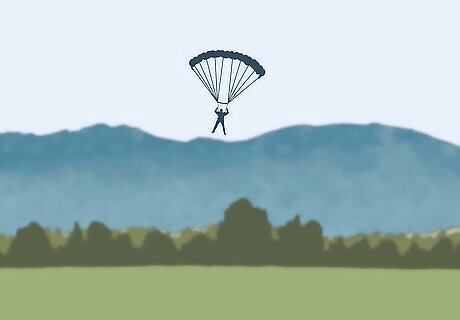
Land safely. Once again, listen to your instructor on how to land. Sometimes you'll stand up for the landing, other times you'll slide in softly. It depends on a lot of factors.

Brag. You just did something that most people don't have the courage to do. Enjoy the accomplishment.

Get certified. If you enjoyed your first skydive and want to do it again, talk to the instructors and the people at the drop zone about how to get certified. It takes a lot of time, money, and effort but you'll find that skydivers are among the happiest people on the face of the earth.



















Comments
0 comment